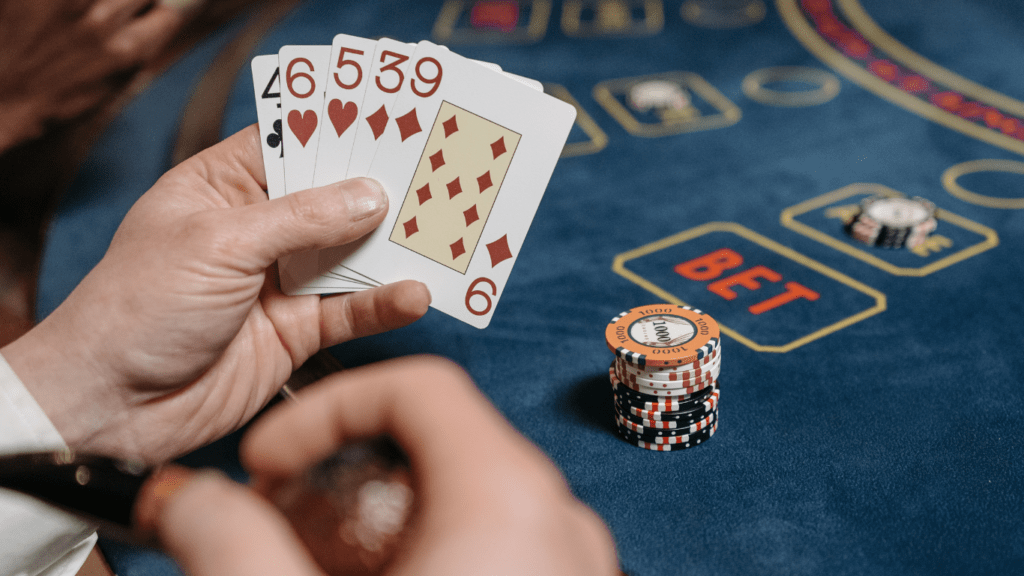Understanding Poker Betting Patterns
Poker betting patterns are a critical element in deciphering opponents’ strategies. Observing these patterns provides clues about their potential hands and tactics. Consistent betting behavior typically indicates predictability, while irregular patterns suggest strategic movements or bluffs.
Common Betting Patterns
Understanding common patterns helps identify opponents’ tendencies. Here are a few essential patterns:
- Calling Station: A player who frequently calls, rarely folding or raising. This behavior often indicates a weaker hand but a desire to stay in the game.
- Aggressive Bettor: This player raises and bets often, applying pressure to others. Such patterns usually signal strong hands or skilled bluffing.
- Check-Raiser: A player who checks early in a round, then raises after an opponent bets. This pattern typically reveals a strong hand, aiming to maximize the pot.
- Slow Player: One who bets conservatively, waiting for later rounds to increase bets. This often denotes a significant hand, managed with caution to entice others into the pot.
Analyzing Betting Frequency
The frequency of bets gives insights into a player’s strategy. Frequent betting often indicates an aggressive approach, whereas infrequent betting usually suggests caution or weak hands. Tracking how often an opponent bets helps predict future actions.
Betting Size and Intensity
Betting size matters. Large bets can indicate strong confidence or attempts to bluff, while smaller bets usually suggest tentative play. Noticing these variations assists in forming a strategy against opponents.
Position-Based Betting
Betting patterns change based on table position. A player in an early position betting high suggests a strong hand, as they act without knowing others’ intentions. Conversely, late position bettors have more information and can make strategic moves to exploit weaker players.
Adaptable Strategies
Professionals adapt their betting patterns to avoid predictability. Recognizing adaptability in opponents’ behaviors helps in counter-strategizing. For instance, if an aggressive bettor suddenly becomes conservative, it likely signals a strong, hidden hand.
Technology and Pattern Recognition
Modern poker tools and software analyze betting patterns and predict opponents’ future actions. While not infallible, these tools help refine strategies based on historical data. Incorporating such technologies in gameplay enhances one’s ability to read patterns.
Betting patterns aren’t solely about numbers; they reveal psychological elements and strategies. Understanding these nuances shapes a more comprehensive approach to poker, giving players a significant edge.
Key Betting Patterns to Watch
Understanding specific betting patterns can significantly enhance your strategic approach to poker. Monitoring these patterns helps in predicting opponents’ actions and adjusting your tactics accordingly.
Aggressive Betting
Aggressive betting involves consistent, high-value bets that pressure opponents. Players using this pattern often bet or raise frequently, leveraging large bets to intimidate others. If you recognize an aggressive bettor, consider tightening your range and playing stronger hands.
Passive Betting
Passive betting indicates a cautious approach with frequent calls and minimal raises. Passive players typically avoid confrontation and prefer to check or call rather than bet or raise. Identifying passive bettors can help you capitalize on their reluctance by betting more aggressively and forcing them to fold.
Continuation Bets
Continuation bets occur when a player raises pre-flop and then follows through with a bet on the flop, regardless of hitting the board. This pattern suggests that the player aims to maintain control of the hand and create uncertainty in opponents. Spot continuation bettors by noting those who keep betting post-flop after raising pre-flop, and consider calling if your hand has potential.
Check-Raising
Check-raising involves checking with the initial intention of raising an opponent’s bet. This technique signals a strong hand or a bluff aimed at inducing a fold. Watch for players who consistently check-raise, as it often means they hold a powerful hand or want to sway the pot odds. Responding effectively to check-raises usually requires a strong hand or a strategic fold.
How to Analyze Betting Patterns

Understanding betting patterns provides crucial insights into opponents’ strategies. Analyzing these patterns is essential for predicting actions and adjusting tactics.
Observing Player Behavior
Track players’ actions over multiple hands. Identify consistent behaviors, like frequently calling or folding. Aggressive players often raise pre-flop, while passive players may call or check more often.
Notice reaction to various board textures, such as wet or dry boards. This helps predict if they’re bluffing or holding a strong hand. Observation requires focus and patience, as subtle patterns emerge over time.
Bet Sizing and Frequency
Evaluate the size and frequency of bets. Large bets often indicate strength, while small bets may suggest weakness or draws. Consistently large bets can signal a continuation bet strategy.
Track how often a player bets. Frequent bettors tend to be aggressive, whereas infrequent bettors may only bet with strong hands. Comparing bet sizing across different hands helps uncover individual tendencies and potential bluffs.
Timing of Bets
Pay attention to how quickly players bet. Rapid bets can indicate predetermined decisions, typically based on pre-flop hand strength. Delayed bets might suggest uncertainty or weakness.
Players taking long to act might be considering a bluff or facing a difficult decision. Timing patterns can also reveal if a player is trying to manipulate perceptions, making it a key element in reading their strategy.
Adjusting Your Strategy Based on Betting Patterns
Recognizing betting patterns offers a strategic advantage in poker. Applying this knowledge effectively changes the course of the game.
Exploiting Weaknesses
Identifying weak players creates opportunities for exploitation. When opponents often call rather than raise, I can pressure them by raising more frequently.
If a player folds easily to aggressive bets, I’d increase my bluff frequency. By adjusting my strategy based on observed patterns, I increase my chances of extracting maximum value from weaker hands and bluffing effectively against timid players.
Protecting From Bluffing
To guard against bluffs, I monitor opponents’ betting behavior closely. When players consistently make large bets with weak hands, I tighten my calling range, paying more attention to their tendencies.
When facing an unpredictable player, I maintain a conservative approach, only making big calls with strong hands. By adapting to opponents’ bluffing patterns, I protect my stack and make more informed decisions.
Balancing Your Own Betting Patterns
Maintaining a balanced strategy keeps opponents guessing. I mix my play by varying my bet sizes and frequencies, even with similar hand strengths. When I disguise my patterns, it’s harder for opponents to read me.
Employing both slow plays and aggressive plays depending on position and opponents’ tendencies adds an element of unpredictability. Keeping my betting behavior balanced ensures I’m not easily exploited and can counteract different styles effectively.
Common Mistakes to Avoid
Reading poker betting patterns effectively necessitates awareness of common pitfalls.
Overvaluing Specific Patterns
Focusing too much on specific betting patterns can mislead decisions. Opponents might mix their playstyles deliberately to confuse others. For example, overestimating a player’s aggression might cause misreads on hand strength, leading to suboptimal calls or folds. Instead, I consider patterns as part of a broader strategy analysis, factoring in game context and recent plays.
Ignoring Player Reactions
Player reactions to bets are as crucial as the bets themselves. If I ignore these reactions, I miss key information about opponents’ intentions. For instance, hesitation or quick calls can indicate the strength or weakness of a hand.
By paying attention to these cues alongside betting patterns, I gain a fuller picture of the table dynamics and make more informed decisions.

